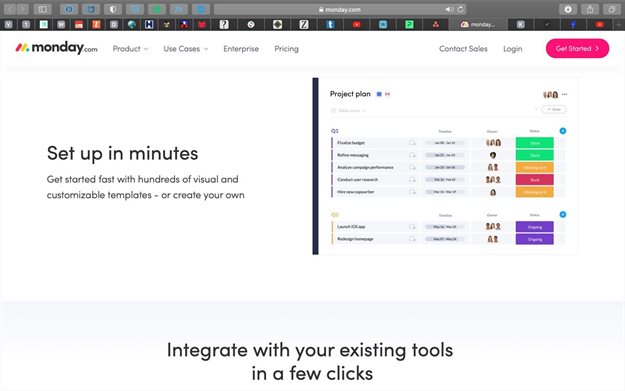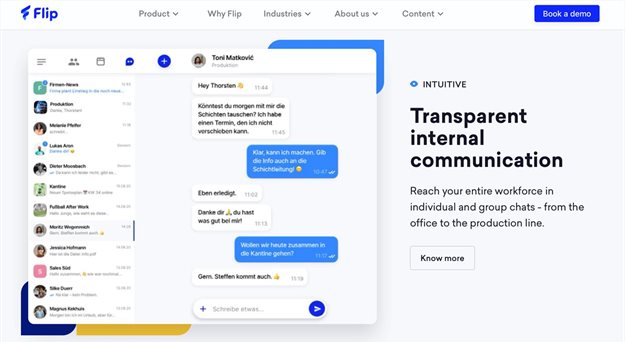5 areas of marketing and creative operations being disrupted by SaaS

As we are all changing and adapting to how we will work and operate in the “next normal” of society; I began thinking about just how many single-use apps there are, that currently power creative work, and how truly a lot has changed over time.
One need only look back to just five years ago to remember how, when sharing large creative files or video projects, one had to have multiple memory cards or flash-drives to facilitate file exchange; while having to have multiple external drives to store and share backups of those very same projects.
Nowadays cloud solutions in the likes of Google Drive, One Drive and even WeTransfer, have enabled the ease of sharing and storing those same files and projects in faster, easier and more reliable ways. The adoption of these incredible single-use digital solutions has empowered everyone, from freelancers to internal departments to even full-service agencies and firms.
However, these innovative single-use apps (Including even the “Pro” level, paid for apps with added features, at that) may just be facing an increasingly uncertain future.
The next generation of software and technology tools, augmenting creative work, are a lot more thought-through, optimised and hyper-targeted to addressing the everyday pain-points of creative professionals. And in my view, they do so in a refreshingly holistic way. As noted in a recent McKinsey report, an emerging new set of technologies is enabling the full automation of routine tasks, low transaction costs, and interconnection that enables self-organising complexity at unprecedented speed.
As we enter a new “work-from-anywhere” era, I have started researching digital solutions aimed at creative services and have discovered some really powerful tools addressing some critical areas in creative operations. From freelancer management software to expense management and project management solutions; there is a lot to sift through for managers looking solutions to empower organisational resilience and adaptability.
Some of the software tools and tech products I have briefly identified below might not, yet, be available in South Africa. But they should all be watched and noted with serious consideration, as we move into a new age of work, post Covid-19 lockdown.
1. Freelancer management
As we have witnessed over the last few years, there has been an exponential rise with more and more people self-organizing in an ever-growing gig economy. Today’s workforce and accessible talent pool for various kinds and levels of work is bigger than it has ever been. As a result, increasing demands on workflow efficiency and increasing availability and flexibility of quality workers within the gig economy; companies are being pushed to source and attract talent differently and transaction costs are falling as workers organize and lend out their skills in new ways.
More specifically to creative departments and enterprises, managing freelance and contract workers is becoming an increasingly burdensome, complex and time-consuming exercise. And for those familiar with these struggles, I say to you, there is indeed an app for that.

Well, there are a few apps actually. From Kalo, to Shortlist, to Talentdesk, and a few others; there is plenty to choose from. These cost-effective software solutions are great to add to any marketing or creative teams operating arsenal. From seamless onboarding and database management, to calendar availability view, managing contracts and tracking invoicing and payments; these tools can be a godsend for those still working with spreadsheets, Google Docs and any other makeshift solution.
2. Project management
Anyone who works in creative industry would know that it is often the case that a lot more planning and project management takes place than the real productive work in creating final products. What’s more, it is almost an unwritten law that the successful implementation and execution of creative ventures, is a process that is rarely linear. Therefore, being agile in the way of approaching and executing projects is deeply endemic to creative work, as new challenges and/or obstacles can arise at almost any moment (As is often the case).
And while excel Gant charts and giant whiteboard project tracking is an enduring staple in offices all around the world; it is often the case that there is no coherent tracking of progress in projects. And is frequently the original sin in creative work that can lead to the familiar obstacles of production bottlenecks, miscommunications due to information asymmetries, and even to failed projects.
However, as these problems are common and faced by many people in various industries; technology innovators have thankfully come up with some wonderful apps for that.

From tools such a Monday, Trello, Slack, Asana and many others. Low cost and scalable technology solutions, like the examples mentioned here, can be welcome augmentation tools in any environment. Furthermore, given the increasingly decentralised way of working, we will be moving into within our new world; these tools and others like them will most certainly become common features in all workplaces and home-offices soon enough.
3. Expense management
This area is one being addressed that for once works to make both finance and creatives happier in the workplace. From my experience, every organisation has its own procedures and processes for managing and keeping track of operational expenditure. It is also quite commonplace that lower-level employees usually don't have easy access to expense cards or expense accounts; and where miscellaneous costs do arise, they often have to be paid out of one's pocket and then, hopefully, claimed later for reimbursement (Note: assuming you remembered to keep the receipt).
However, I am of the view that this approach to expense management is outdated, inefficient, and can be a source of great frustration for many.
My hope is that the pandemic has forced organisations to relook at various issues. With one of those being to reimagine expense management for greater efficiency, worker empowerment, expense tracking and more dynamic budget allocation.

With teams and individuals being shifted to working from home during lockdowns, and post lockdown workplaces looking to be more open to remote work and/or flexible in-office and home-office employee arrangements; it really is the time for management and finance departments to be looking at new ways of keeping track of expenditure, while allowing for quicker approval on work-related spending for more team members.
Thankfully, it seems, there is no need to build systems anew as there are indeed solutions for that. From France based Spendesk, to the UK’s Soldo, to Denmarks Pleo and Germany’s Penta; there is a range of start-ups creating digital tools to make corporate expense management easier, cheaper and more inclusive.
From offering pre-paid debit cards, to virtual cards for one-off transactions, and all-in-one platforms for tracking orders, subscriptions and off-platform payments. Accounting managers and creative professionals the world order should be rejoicing for the potential impact these services will have on day-to-day work processes going forward.
4. Workplace messaging and communications
Is it just me, or is everyone sick of all the WhatsApp groups for work? From internal subcommittee groups, to project groups, to secret gossiping about the manager groups, to special client communication groups. There is just too much! And on top of that, you've got family groups, friend groups and personal messaging all in the same place.
Personally, I have had more than enough, and I deeply feel that something has to give. I propose that it is time to do some decoupling and to re-think workplace messaging and communications. It is time to return WhatsApp to the personal, peer-to-peer communication platform it was intended to be in the first place.
But WhatsApp is so great! Some might say. Well, I would counter that. The rise in popularity and rapid uptake of tools like Microsoft Teams, Slack and other related work messaging solutions suggests to me that we are indeed ready to rethink workplace communications. I believe that we are all ready to evolve into a new era of compartmentalising and separating our work conversations, from our personal ones.

While services like Teams and Slack are a wonderful addition to the new world of work. I personally have found that the mobile app versions of these can be a little clunky and a bit much sometimes. And I would deduce that it is a result of some feature creep that has overshadowed the fundamentals of messaging on both these platforms.
In searching for replacement software products, that are also more focused on the core elements of workplace communications, I came across a few solutions that tick all the boxes. And one of those was Flip. The UI was refreshingly simple and clear and great for use on smartphones while continuing to offer all that one needs for workplace messaging; and in my view, it is a solid option to consider as a communications system to add in any organisation.
5. Digital asset management
In carrying on from the opening paragraphs of this article, I would like to pose the following question: what is next for marketing and creative operations post the era of WeTransfer, Google Drive and DropBox?
Certainly, the aforementioned services will remain key staples in marketing and creative organisations the world over. However, Covid-19 and the resulting global work-from-home social experiment we have been forced into; has exposed for all of us, the need for robust and dynamic Digital Asset Management (DAM) solutions. And how targeted DAM platforms can support the creation of more flexible and resilient creative operations systems.

While some of the most leading and innovative DAM solutions available on the market currently could be pricey for many small and still scaling/growing agencies and departments. The operational benefits of incorporating these services should be given serious thought and consideration; while being weighed against current workflow processes, costs of implementation and the potential tangible and intangible value that could be added in the future.
As the world changes and evolves into the next normal; now really is the time for businesses and organisations to evolve and adapt to the new operating environment.
In preparing to implement changes for optimising work in the new normal I propose a different approach for managing that change. An approach of rather upskilling current talent. Of augmenting it, and its related working environment with the new tools and technology, in developing more resilience and agility for the future.
And where there may be other challenges or pain points arising in this new age of digital transformation; you will probably find that, there is almost always, an app for that.
About Lerato Mokhethi
- 5 areas of marketing and creative operations being disrupted by SaaS - 30 Sep 2020
- Saving SA journalism: Opportunities in AI development - 25 Aug 2020
View my profile and articles...